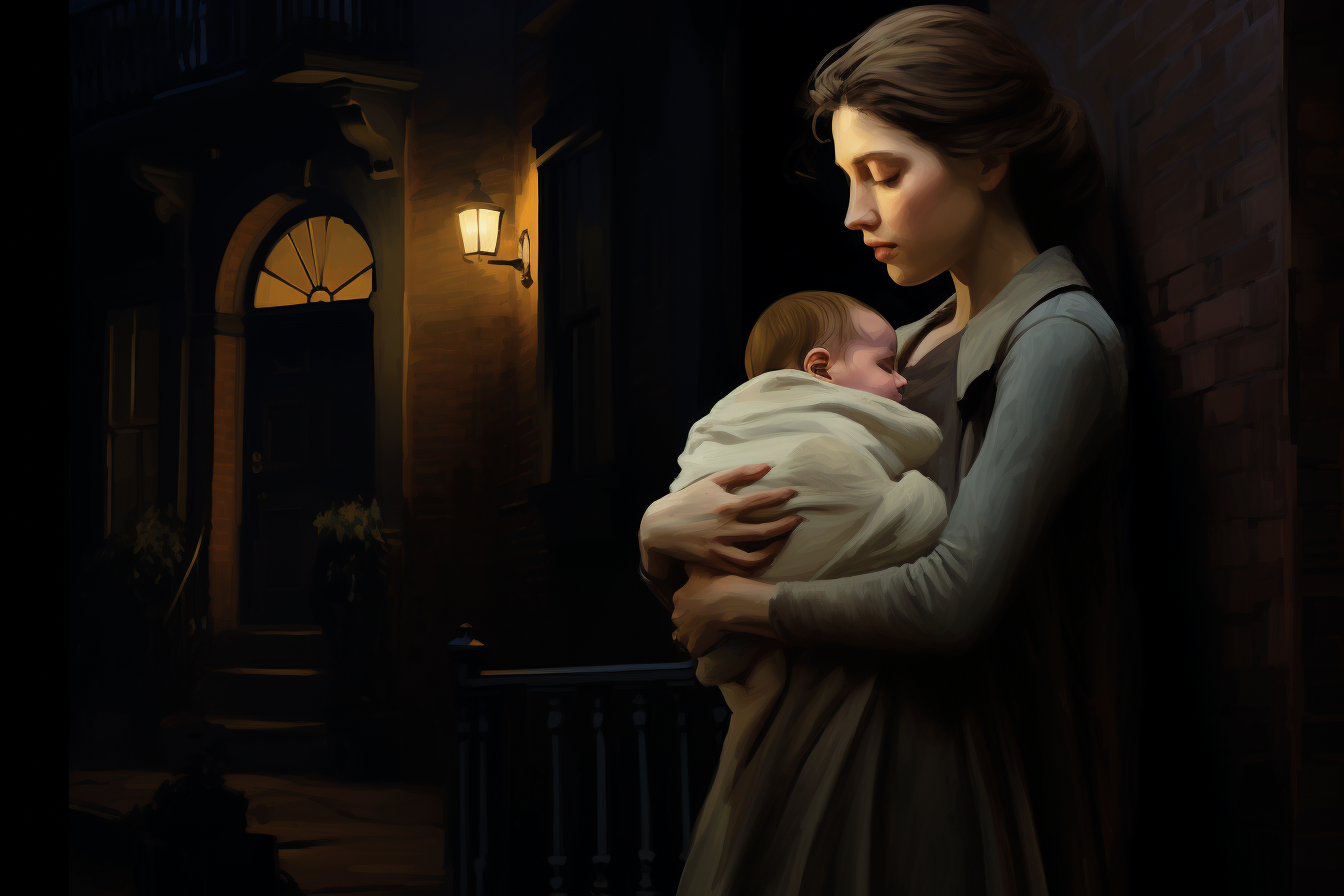The Dark History of British Baby Farms
In the shadow of Britain's industrial revolution, a chilling enterprise known as baby farms emerged. Driven by societal pressures and economic challenges, these establishments became the grim solution for many unwed and impoverished mothers.

Amelia's heart raced as she clutched the tiny bundle in her arms, feeling the warmth of her infant daughter against her chest. The streets of London felt colder than usual, as her steps led her to the unassuming door of Mrs. Blackwood's residence. She had heard about places like this — where for a modest fee, women like Mrs. Blackwood would look after children, giving mothers a chance to find work or a new start.
In Amelia's mind, she imagined a cosy home filled with laughter, where her daughter would play with other children, cared for by a loving matron. She envisioned returning one day, financially stable and ready to reunite with her child. Holding onto that hopeful vision, she mustered the courage to knock.
***
Amelia's hopeful vision of Mrs. Blackwood's residence was not unique. Baby farms, as they came to be known, were private establishments in 19th-century Britain where women, often referred to as 'baby farmers', would take in infants and young children for a fee. At face value, these places seemed to offer a solution for mothers unable to care for their children due to various circumstances, such as poverty, societal stigma, or personal crises. The idea was that these baby farmers would provide food, shelter, and care, acting as interim guardians until the child could be returned to their family or placed in a new home.
However, the reality was often far grimmer. While there were undoubtedly some baby farms that operated with genuine care and concern for the children, many were overcrowded and under-resourced. Driven by profit, some baby farmers took in more children than they could adequately care for, leading to neglect, malnutrition, and, in the worst cases, intentional harm or death. The term "baby farm" thus carries with it a dark connotation, symbolizing a tragic chapter in British childcare history.
Origins and Rise
The emergence of baby farms can be traced back to the early 19th century. As Britain underwent rapid urbanization and industrialization, traditional familial and societal structures faced upheaval. Many women, especially those who were unwed, found themselves in precarious situations when they bore children. With limited social welfare systems and the stigma attached to illegitimacy, baby farms became a grim solution to a growing problem.
Conditions and Controversies
- Neglect and Malnutrition: Many baby farms were overcrowded and operated more as profit-driven enterprises than genuine childcare institutions. Children frequently suffered from malnutrition, lack of medical care, and general neglect.
- Mortality Rates: The death rates in these establishments were alarmingly high. Some baby farmers took fees, fully aware that the children under their care had little chance of survival.
- Infanticide: The darkest aspect was intentional murder. Some farmers, either overwhelmed or purely profit-driven, actively killed infants in their care.
- Adoption and Trafficking: Some baby farms also operated as unofficial adoption agencies, where children were 'sold' to couples. Without proper checks and regulations, this often led to further exploitation and abuse.
High-Profile Cases
- Amelia Dyer (1890s): Perhaps the most infamous baby farmer, Dyer is believed to have murdered hundreds of infants over a twenty-year period. Her heinous crimes were eventually exposed, leading to her execution in 1896.
- Margaret Waters (1870): Often referred to as the "Brixton Baby Farmer", Waters was another notorious figure. Convicted for the neglect and death of several infants, her case was pivotal in drawing public attention to the horrors of baby farming.
Legislative Interventions
- The Infant Life Protection Act of 1897: This was a crucial first step in regulating baby farms. It mandated the registration of caregivers looking after infants for payment.
- The Children Act of 1908: A landmark in child protection, this act introduced several welfare measures, including regulations on foster care and punishments for neglect and abuse.
The Decline and Legacy
By the early 20th century, baby farms had largely diminished, thanks to legislative measures, public awareness, and changing societal norms. While these farms in their most notorious form had disappeared, challenges in child welfare persisted. The legacy of baby farms underscores the importance of vigilant child protection mechanisms and the dangers of unchecked profit motives in caregiving industries.





